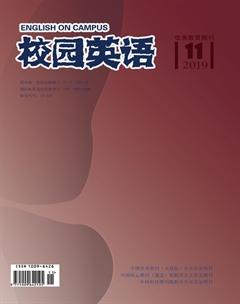论叶芝诗歌风格从浪漫主义到现代主义的转变
【摘要】威廉巴特勒叶芝是当代英语文学最伟大的诗人之一。在他整个的人生历程中,他经历了许多阶段,比如浪漫主义、象征主义、现代主义等。他的写作风格一直在发生变化,其作品可以大致分为三个阶段:早期(1883-1904)、中期(1904-1917)和晚期(1919-1939)。本文分析了叶芝在多种因素的影响下从浪漫主义到现代主义诗歌风格的转变。
【关键词】威廉·巴特勒·叶芝;浪漫主义;现代主义;风格变化
【Abstract】W. B. Yeats is one of the greatest poets in contemporary English literature. In his whole life, he went through many periods, like Romanticism, Symbolism and Modernism. His writing style was always changing, and his works can be divided into three general periods, the early (1883-1904), the middle (1904-1917), the late (1919-1939). This thesis analyzes the transition of Yeatss writing style from Romanticism to Modernism under some influences.
【Key words】W. B. Yeats; Romanticism; Modernism; transition
【作者簡介】雷雨,四川外国语大学重庆南方翻译学院。
In Yeatss early period, he committed himself to Romanticism. But influenced by many factors, in the middle, his growing interest on plain speech and harsh reality indicates the tendency to Modernism which becomes stronger in late years.
1. Romanticism
Yeats once claimed himself as “the last romantics” born in the wrong age. But it was him who brought freshness and vigor to the late Romanticism. Under the influence of the Romantic movement and the Pre-Raphaelites, Yeatss early poems (around 1886-1970) are magical, mysterious and supernatural, many of which are marvelous in the depiction of a legendary Ireland, a Celtic mythology and supernatural beings. Yeats weaves the mythical past with the historical present to show the grandeur and beauty he perceived.
2. Modernism
As Yeats grows older and experience whittles away the enthusiasm and hope, the poetry changes in tone. The poems of his middle and last periods express disillusionment and loss, reflections on current events, and attitude towards love and death. With satires and elegies, the poetry becomes less wishful and romantic, but more realistic and robust. Elements of resignation, anger and disillusionment weaken optimism, and experience obliterates innocence. Romanticism is fading, and his inclination to Modernism is showing.
3. Reasons for Yeatss Transition from Romanticism to Modernism
3.1 Irish Revolution
Many of Yeatss early poems are concerned with the creation of a cultural identity, for he was very concerned with Ireland as a whole, with its spiritual and intellectual life rather than just her political future. Yeatss exasperation with Ireland, his sadness at the failure of people to see what he was trying to do make him turn away from the old stories and imagery, and the tone becomes sharper, more attuned to the rhythms and diction of speech than the Romantic style of apostrophe and declamation.
3.2 Failure in Love
During his stay in London, Yeats met Maud Gonne and soon fell in love with her and wrote many of his best poems about her, like “When You Are Old”. However,Maud Gonnes repeated refusals to marry Yeats, her marriage to John MacBride made his love disillusion, which led to a change in the tone of his love poetry. The early poems, wistful and longing, give way to a disappointment and bitterness in the middle period. In the last, Yeats returns to the theme of love, but differently, his emotion is more analytical and rational.
3.3 Poet Ezra Pound
Pound and Yeats met each other in 1909, after Yeats met Pound, his writing style started to undergo large changes. Yeats adopted Pounds advice to systematically adjust his poetic style by using the practical materials and images of the time and fully modernize his poems. Then the poems became more rigid and transparent, images more realistic and concise, languages more plain and pure. Schnidt thinks, after Yeats met Pound, a kind of concrete and substantial style was formed.
W. B. Yeats came from Romanticism and grew to be a Modernist without giving up his romanticism characteristics, and finally earned himself the great title “Modernist lyric poet of Romanticism”.
References:
[1]Murray C.W.B. Yeats:Writings on Irish Folklore, Legend and Myth by Robert Welch[J]. Irish University Review,1993.
[2]史德普,傅廣军,马欢译.叶芝:谁能看透[M].大连:大连理工大学出版社,2008.

